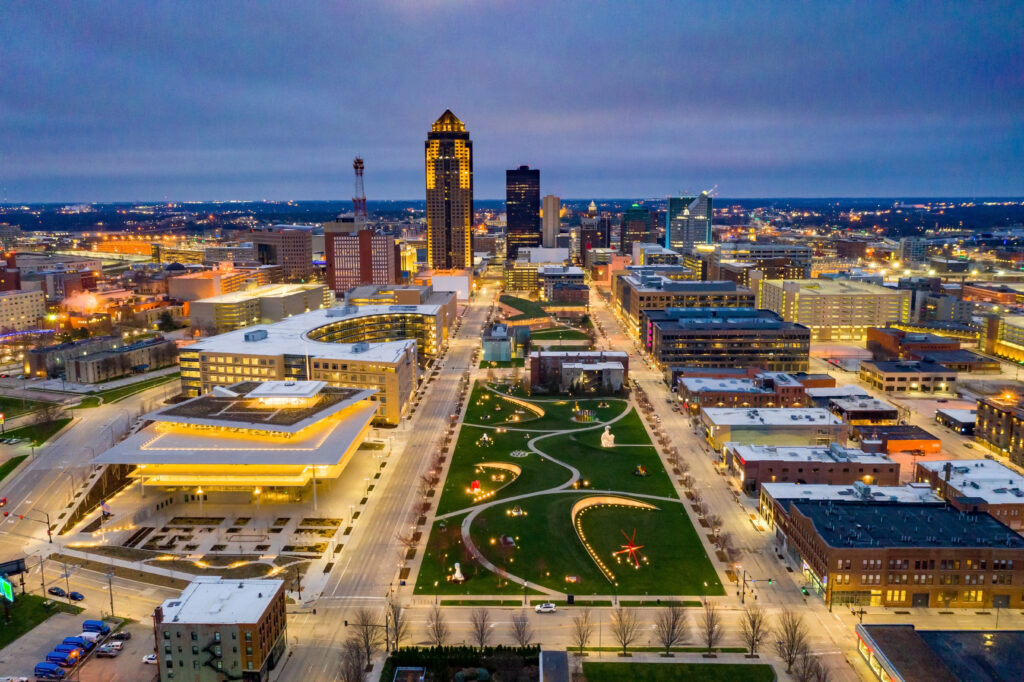Former Milwaukee mayor supports converting DSM one-way streets to two-way

PERRY BEEMAN May 5, 2016 | 6:37 pm
3 min read time
638 wordsAll Latest News, Business Record Insider, Transportation
Blunt-speaking former Milwaukee Mayor John Norquist spent time surveying Des Moines’ new urbanism this week, praising attractions like the East Village while suggesting downtown should turn its one-way streets into more pedestrian-friendly two-way routes.
Norquist was making rounds in Greater Des Moines this week at the invitation of the Urban Land Institute Iowa and the Des Moines Area Metropolitan Planning Organization. He took a walking tour of downtown and a driving tour of Ingersoll and University avenues and Drake University, met with city leaders, and sat down with me for a chat in an upper-level office in 801 Grand.
Norquist, 66, was Milwaukee mayor from 1988 to 2004. He helped convert the downtown streets there from one-way to two-way, and presided over a downtown housing boom.
Norquist said two-way streets tend to slow down traffic, which is good for walkers and for those enjoying a sidewalk cafe. “If the street is more of a traffic sewer, you’re not going to put a chair on a sidewalk and watch people go by,” he said.
“I would encourage the two-way street (conversion),” Norquist said. “It’s not that expensive. The only expense, really, is additional signals and some different lines on the pavement.”
“There isn’t enough traffic here to justify the one-way streets to the extent that you have them,” Norquist said.
“You started building one-way streets here in 1953, before the freeway era. It was a trend at the time; people thought it would be better. I don’t think it’s devastating. One-way streets can be OK; one-way pairs. But they are bad for retail, they are bad for social interaction, they are dangerous for pedestrians as you get higher speeds. We converted most of the one-way streets in downtown Milwaukee, and every one of them was a pilot project. In every case, the reaction was positive, so we just went ahead and did it.”
In Des Moines — where someone needs to create an app to keep track of streets that seem to change from one-way to two-way periodically (see Court Avenue and Fifth Avenue, for example) — the one-way streets confound the many visitors coming to town for state tournaments, to do business, or to visit downtown attractions. Many visitors end up circling four or five blocks to try to get where they are going.
Norquist liked what he saw on Court Avenue, now a two-way street after once being a one-way.
“Court Avenue is fabulous. It might have still been a cool street with one-way, but there are a lot of little advantages to a two-way.” Those advantages include making the area more pedestrian-friendly and a better spot for sidewalk cafes, he said.
Norquist also liked Ingersoll Avenue, where statistics have shown better traffic movement and fewer accidents with the move to fewer lanes of vehicle traffic and the addition of bike lanes.
And he found the East Village a model of pedestrian-friendly commerce that could help Des Moines fight its heavy reliance on vehicles. “The East Village is a nice little piece of work,” Norquist said. “A lot of Des Moines residents have become familiar with it, so they will be less resistant to changes in the future.”
Norquist is all about “adding value,” but notes Des Moines hasn’t always achieved that. “There have been a lot of investment since World War II that didn’t add value, like overreacting to the loss of business to West Des Moines by trying to make downtown more like the suburbs. By building expensive parking (ramps) — more than were needed. And the skywalk system, which didn’t save the department stores. Most cities made similar mistakes.”
“You’ve learned from those mistakes, and some really good things have happened lately.”
Norquist said he works as a consultant for Cleveland and gives a speech or two a month around the country.









